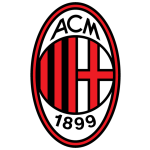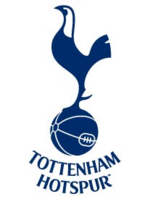Understanding Odds and Key Information for Betting Success
Bettors frequently rely on odds as a crucial factor in analyzing wagers. Even seasoned experts use odds to evaluate betting opportunities effectively. But what exactly are odds, and how can you analyze them accurately to secure an edge over the bookmakers? In this article, soccer tip today will explain what the odds are, their significance, and how to leverage them for successful betting.
What Are Odds in Sports Betting?
Odds represent a fundamental component in sports betting. They indicate the payout a bookmaker is prepared to offer if a bettor successfully wagers on a specific outcome. Beyond reflecting potential winnings, odds also reveal the probability of a particular event occurring during a match.
Bookmakers determine odds through a complex calculation process, incorporating factors such as statistical analysis, team performance, and fluctuations in the betting market. The odds are dynamic and may shift to balance the risks on both sides of a bet and to encourage more wagers from bettors.
While understanding odds can improve your chances of winning, it’s essential to recognize that bookmakers may use these figures to create traps that reduce the likelihood of a bettor’s success. Thus, having a thorough grasp of odds is vital to making informed betting decisions and avoiding costly mistakes.
Types of Odds and How to Analyze Them
To maximize your chances of success in sports betting, it is essential to understand the different types of odds and how to interpret them effectively. Here, free soccer daily tip will introduce the most commonly used types of odds in soccer betting::
1. Decimal Odds (European Odds)
Decimal odds are the most straightforward and widely used format, especially in Europe. They represent the total payout for every unit wagered, including the initial stake. For example, a decimal odd of 2.50 means that for every 1 unit bet, you would receive a total of 2.50 units if you win.
How to Analyze:
To evaluate decimal odds, compare offerings from different bookmakers and choose the highest odds for the most favorable return.
2. Indonesian Odds (IND)
Indonesian odds display both positive and negative values to indicate the potential profit or required stake. A positive odd (+1.50) signifies the profit for every unit wagered, while a negative odd (-1.50) represents the amount you need to stake to win one unit.
How to Analyze:
Pay attention to whether the odds are positive or negative to determine the optimal stake and potential profit.
3. Hong Kong Odds (HK Odds)
Hong Kong odds are similar to decimal odds but show only the profit amount, excluding the initial stake. For instance, an odd of 1.50 in this format means you would gain 1.50 units of profit for every 1 unit wagered.
How to Analyze:
Compare Hong Kong odds to decimal odds to understand the differences and choose the most advantageous option.
4. Malay Odds (MY Odds)
Malay odds use a unique system where positive odds reflect the profit for every unit wagered, while negative odds indicate the required stake to win one unit. For example, an odd of +0.75 means betting 1 unit yields a profit of 0.75 units, while -0.75 means staking 0.75 units to win 1 unit.
How to Analyze:
Carefully consider both positive and negative odds to decide on the most favorable bet.
5. American Odds (US Odds)
Common in the United States, American odds use positive and negative numbers to express potential profit or required stake. Positive odds (+150) show the profit on a $100 bet, while negative odds (-150) indicate the stake needed to win $100.
How to Analyze:
Understand how to convert between odds formats for a more comprehensive evaluation, ensuring the best possible choice.
Expert Tips for Accurate Odds Analysis
To excel at analyzing odds, bettors need to focus on specific betting scenarios and refine their approach over time. Below are some expert strategies to improve your accuracy:
Handicap 1/4 with Over/Under 2 to 2.5:
When odds are balanced, consider betting on the underdog. This applies to matches with closely matched teams and a likely low-scoring outcome.
Handicap 1/2 with Over/Under 2.25 to 2.5:
In this scenario, opt for the underdog if there’s a slight disparity in team strength, but scoring opportunities are limited.
Handicap 1/4 with Over/Under 2.75:
If odds are balanced but heavily favored by the market, consider betting on the over. This indicates a higher probability of multiple goals being scored.
Handicap 1.25 with Over/Under 2.75:
When the balanced odds exceed 0.90, betting on the underdog is a strategic choice. This is especially true in matches where the stronger team is only marginally favored, and a close scoreline is anticipated.
Mastering Odds for Long-Term Success
Understanding odds is not just about improving your chances of winning; it’s also about making smarter betting decisions. Here are some final recommendations to develop a long-term betting strategy:
Specialize in a Specific Odds Format:
Choose one type of odds that aligns with your preferences and study it thoroughly to gain a competitive edge.
Analyze Market Trends:
Pay attention to betting market trends, including odds fluctuations, to identify potential opportunities or traps set by bookmakers.
Manage Your Bankroll:
Always wager within your means and avoid chasing losses. Proper bankroll management is the cornerstone of successful betting.
Stay Disciplined:
Avoid impulsive decisions based on emotions. Stick to your strategy and make data-driven choices.
By mastering the nuances of odds and applying strategies gained from the best premium soccer tips , you can enhance your betting experience and increase your chances of success. Remember, betting is not just about luck—it’s a skill that improves with knowledge and practice.









